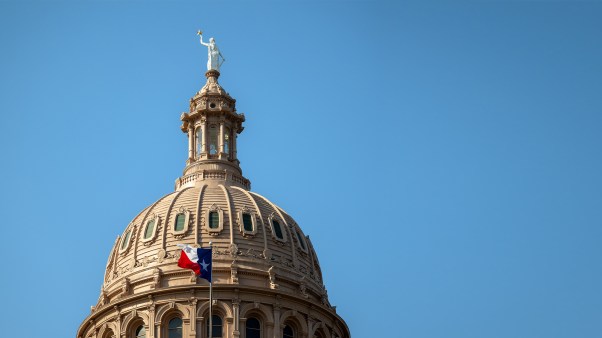I have never been able to understand why anyone would worship a wooden statue. Or a tree or an Asherah pole, a cow or an elephant, or a god who looks like a frog. I think I get it at an intellectual level—they represent fertility or whatever—but I cannot get my head around people being spiritually drawn to adore them, rejoice before them, or sacrifice to them. If I had been born an ancient pagan, I wouldn’t have been the idol-fashioning, maypole-dancing type. (At least, I struggle to imagine myself that way.)
God of All Things: Rediscovering the Sacred in an Everyday World
HarperCollins Children's Books
224 pages
$12.27
But I can see why people used to worship the sun. I’m not saying they should have, obviously, but I can relate to the instinct. So far as anyone knew until quite recently, the sun was by far the largest thing in the sky and the source of all light, heat, power, and life. Especially in Northern Europe, where I come from, the difference between sunshine and darkness, summer and winter, is so great that it must have been tempting to rush outside in the springtime and prostrate yourself before the giant yellow ball of fire. Were it not for Christianity, I suspect many of us still would.
Unsurprisingly, this presented a challenge to ancient Israel. Moses had to urge the people not to worship the sun, with fairly drastic legal consequences for anyone who did (Deut. 4:19; 17:2–5), and the prophets revealed that it was still a problem many centuries later (Jer. 8:2; Ezek. 8:16).
The risk of idolatry is partly why Scripture keeps pointing out all the things the sun is not. It is not eternal: The Bible’s opening chapter makes clear that the sun was not created until day four, and its last chapter tells us that the sun is no longer needed, “for the Lord God will be their light” (Rev. 22:5, ESV throughout). It is not inevitable and can be darkened (and dethroned) at will by the one who created it (Ex. 10:21–29). It is not in control; it can be made to stand still (Josh. 10:12–14) or to move shadows in the wrong direction (Isa. 38:8). These might look like random potshots at the sun, but they are ways of protecting Israel from turning a gift into an idol. The sun had the potential to be a huge theological problem.
Yet it also had the potential to be a huge theological opportunity. So long as people could use the sun as a way of meditating on and worshiping God, rather than as something to be meditated on and worshiped itself, they could learn a great deal about him. The psalmist is very happy to use the sun to shed light on the nature of God: “The Lord God is a sun and shield” (Ps. 84:11).
There are numerous attributes of God we can see more clearly by thinking about the sun for a moment, and in a way that is true of nothing else in creation. Glory, for instance. Fire and the fear it produces. Otherness. The mysterious combination of great distance and felt presence, transcendence and immanence. The all-seeing, all-illuminating orbit, bringing heat and revelation to the entire world (Ps. 19:4–6). The fact that the sun is always shining, even when its light is concealed from us by the position of the earth or the covering of the clouds. Radiant brightness. Sheer power. When the apostles want us to see the splendor of Christ, sunshine is the only metaphor they need. “He was transfigured before them, and his face shone like the sun, and his clothes became white as light” (Matt. 17:2; see also Rev. 1:16).
The sun shows us something of the primacy, centrality, and sovereignty of God. It is a fountain of light: the first, the source, the origin of illumination for everything else. In ancient terms, it is the “greater light” that rules the day, dictating the seasons, the days, the harvests, and the weather (Gen. 1:14–16). In modern terms, it is the giant gravitational centerpiece of the solar system, containing more than 99.7 percent of the system’s total mass and pulling everything else into its orbit. Although it is created, its existence even points to the independence of God, since the sun is a luminary in its own right rather than (like the moon) reflecting light from another source. It governs our notions of time (the hours of the day). It governs our notions of space (our relative sense of east and west). Other than a human being, it is hard to think of anything in creation that highlights as many of God’s characteristics as the sun.
There are subtler connections here as well. With the sun, as with God, there is no distinction between what it is and what it does. The sun gives light and heat because it is light and heat. Its action reflects its identity; its goodness is the overflow of its nature. And the same is true of God. He does good all the time because he is good all the time. “Every good gift and every perfect gift is from above, coming down from the Father of lights, with whom there is no variation or shadow due to change” (James 1:17). This may be why, when comparing God to the sun, the psalmist waxes lyrical about his goodness: “The Lord God is a sun and shield; the Lord bestows favor and honor. No good thing does he withhold from those who walk uprightly” (Ps. 84:11).
For all these associations, however, the one that stirs my heart the most—and certainly the one that we sing about the most, at least in the English-speaking world—is the one that comes in Malachi 4. Malachi has no idea that he will be the last prophetic voice for more than 400 years. He doesn’t know that he is writing the final words of the Old Testament, at least in our English Bibles (the Hebrew Scriptures are ordered differently). But he wants God’s people to know that no matter how long they have to wait, the Lord will surely come and judge evil and turn the hearts of the fathers to their children, and the children to their fathers (v. 6). And he wants them not just to know but to feel the joy of that future moment, the joy of God’s presence rising over them, even if they don’t live to see it. “For you who fear my name,” God promises, “the sun of righteousness shall rise with healing in its wings. You shall go out leaping like calves from the stall” (v. 2).
It is a beautiful image. The return of the King, when he comes, will prompt the kind of joy that a songbird feels at dawn or a photographer feels at sunrise. It will feel like the whole world is being healed by beams of celestial light. It will bring the abandon and gaiety that you see in newborn lambs and calves when they skip from their barns into spring fields in the morning, mingled with the relief experienced by emperor penguins when the sun finally breaks through at the end of an Antarctic winter. You will want to dance for joy because the long-awaited day of sunshine has come.
So every Christmas we sing about it and remind ourselves of the brightness that has broken into our darkness:
Hail, the heaven-born Prince of Peace!
Hail, the Sun of Righteousness!
Light and life to all he brings
Risen with healing in his wings!
Taken from God of All Things by Andrew Wilson. Copyright © 2021 by Zondervan. Used by permission of Zondervan. www.zondervan.com.











